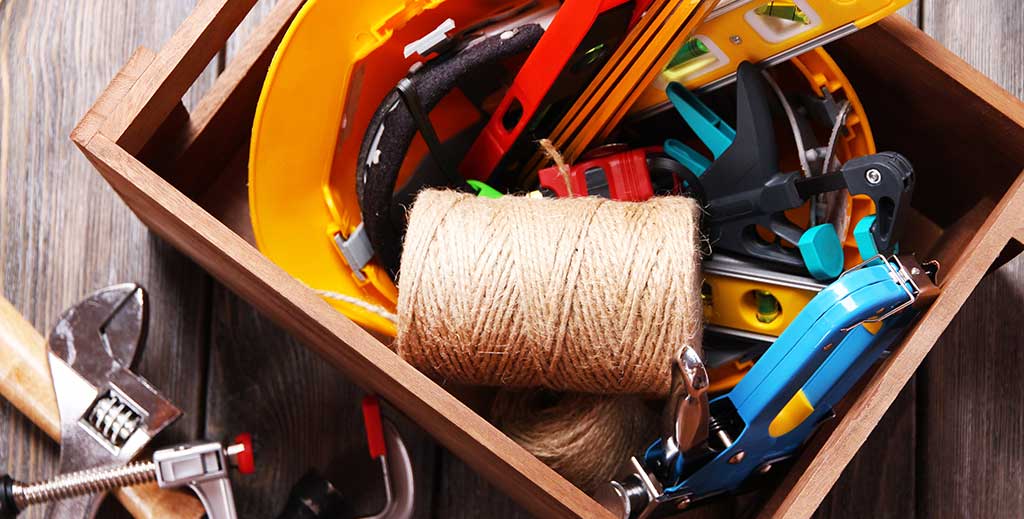Toolbox Talk: “PPE”
Why do I need to wear personal protective clothing and equipment?
Let’s give it some thought.
The human body is amazing. We have a head and brains for thinking, ears for hearing, eyes for seeing; a nose for detecting odours; a mouth for talking and eating; lungs for breathing; arms, elbows, knees and legs for lifting and bending; hands and fingers for dressing and feeding ourselves and for writing; legs for walking and running; and feet and toes for support and balance.
However, we can be easily cut, burned or blinded. We can break bones, cut flesh, become deaf or blind, get scraped and suffocate.
These possibilities bring to mind the need for working safely and wearing personal protective equipment and clothing.
Employees may work on a job that requires personal protective equipment, such as safety glasses, safety shoes, gloves and hand pads, hearing protection, hard hats and respirators.
Personal protective equipment cannot prevent an accident from occurring, but safety equipment can prevent serious injuries.
We realize that safety glasses, safety shoes, gloves, ear plugs, hard hats and respirators are kind of a nuisance to put on and wear and may seem rather bulky and uncomfortable.
Most of the time, if personal protective equipment is properly fitted; it’s just a matter of getting used to wearing it.
This is a lot easier to adhere to when we remember that we stand a better chance of continuing successfully with our jobs and home lives if we are protected from possible serious injuries by personal
protective equipment.
SAFETY EYE PROTECTION—Safety glasses, goggles, side shields, face shields, welding shields. Eye protection is needed where there is airborne dust; the danger of flying metal, wood or other materials; welding; and splashing chemicals.
Employees must choose and use the protective safety eyewear required for their jobs.
SAFETY FOOTWEAR -Safety shoes offer soles with puncture protection instep protection, ankle snugs to ward off sparks, metatarsal guard, non-slip sole and steel caps that protect the toes from falling object.
Today safety shoes are very comfortable, fashionable and effective.
HAND PROTECTION- Approved cloth work gloves, leather hand pads, metal mesh gloves, insulated gloves, neoprene and plastic gloves, and rubber gloves provide protection when handling sharp, rough, greasy and hot materials, and during operations where the hands are directly involved with lifting or moving objects.
Other special- purpose hand protection includes leather wrist and arm sleeves, hand mitts and finger pads.
HEARING PROTECTION- When noise is above acceptable levels and it is impossible to reduce noise output, personal hearing protectors, such as ear plugs, ear muffs, sound bands and moulded ear plugs must be used. This equipment must be worn properly and kept in good condition to be effective.
SAFETY HEAD GEAR -For protection from falling or flying objects, moving machinery, sharp corners, heat and fire, electric shock, dripping chemicals and unseen dangers, hard hats should be worn. Hard hats must have sturdy brims, and rigid inner suspension to cushion shocks and blows; they may have chin straps and removable face shields.
Hard hats can be made of plastic, fiberglass or metal. Other head protection includes bump caps, hair nets and chemical resistant hoods.
RESPIRATORS- Respirators should be worn if inhalation hazards are present in the workplace. They should be provided by the employer.
Respirators are used where there is dust, paint spray, fumes, smoke and mists.
In hazardous working conditions, self- contained breathing apparatuses are required. You should know the proper methods of fitting, maintaining and cleaning respirators.
OTHER PERSONAL PROTECTIVE EQUIPMENT;
• Life vests when working over or near water.
• High visibility clothing for traffic work and mine and quarry work.
• Lifelines and safety belts for iron and utility line workers.
• Rubber, plastic and leather aprons to protect from acid and chemical splashes.
• Insulation suits for protection from fire and heat. Leaded clothing for protection against X-rays. Leggings and sleeves for added protection against splashes and flying particles.
• Disposable paper, cloth or plastic clothing for protection against germs or harmful chemicals.
Personal protective clothing and equipment have their place in sports, manufacturing plants, foundries, construction and many other areas of industry.
It is our responsibility to be safety-conscious. We must recognize the importance of personal protective clothing and equipment and take advantage of their benefits by wearing them.
Suit up for safety–use and wear and care for personal protective clothing and equipment
“At every choice point in your life — pause –and bring out your best rather than your baggage.” Eric Allenbaugh
Thanks, TO



